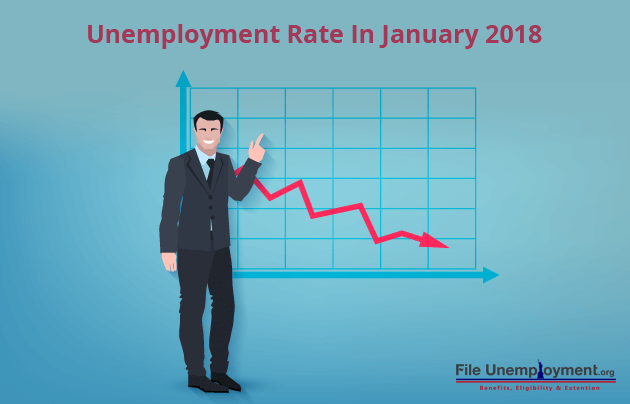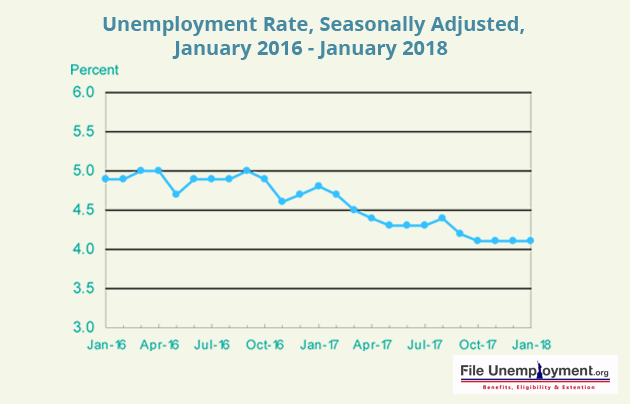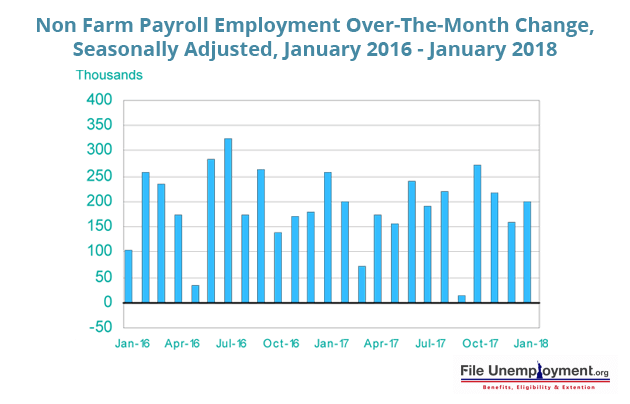The Employment situation is a monthly report provided by the US Bureau of Labour statistics. The report mainly consists of data which involves the unemployment rates in the country. This unemployment rate research takes into account all factors such as unemployment in the terms of ethnicity, race, gender, age and industry. The report also examines the improvement/decline in wage among companies. While the report does provide the data, here are the important highlights simplified to make it easier to understand for the common reader.
Current Unemployment Rates
The employment situation in the United States remains unchanged for the fourth consecutive month at 4.1 %. In terms of the number of people, that too remains relatively unchanged with 6.7 million people unemployed.
When it comes to the major working groups, the black community had a rise in unemployment to about 7.7% while unemployment among the whites decreased to 3.5%. The jobless rates remained similar to that of last month with adult men (3.9%), adult women (3.6%), teenagers (13.9%), Asians (3.0%) and Hispanics (5.0%).
In terms of long-term unemployed i.e people who haven’t been employed for 27 weeks or longer. it was changed to 1.4 million and accounts for 21.5% of the overall unemployed.
However, persons employed on a part-time basis for economical purposes remained at 5 million, which was the same in January 2018. These individuals would prefer to work in full-time jobs but were given only the options to work part time or full time with major cutbacks to hours.
200,000 jobs were created in the month of January for Non-Farm employment. Employment continued to rise in food services and drinking places, healthcare, construction, and manufacturing.
Construction had increased their tally of jobs by 36,000 jobs in January. Most of this boost in jobs comes from Specialty trade contractors (+26,000) while employment in the residential building construction rose by 5000. Over the year, the construction sector has set about the creation of 226,000 jobs.
Employment in the food services and drinking places sector rose by 31,000 in the month of January. Over the past twelve months, the industry managed to provide 255,000 jobs.
The Healthcare industry continued to rise in terms of job creation in the month of January with 21000 jobs. 13,000 of which were jobs created in hospitals. Healthcare added in an average of 24,000 jobs this past month.
Employment in the manufacturing sector continues to be on an upswing with +15,000 jobs. The durable goods industry has also been on the rise with an increment of 18000 jobs. Manufacturing overall has brought in 186,000 jobs over the past 12 months.
Employment in other major industries, including mining, wholesale trade, retail trade, transportation and warehousing, information, financial activities, professional and business services, and government, changed little over the month.
Increase in Wage Rates
Industries in the US brought in 200,000 jobs which were more than the 180,000 jobs that were predicted. An example of this is the rise in hourly wages by 2.9% yearly in comparison to January of last year. In terms of monthly raises, it has increased by a good 0.3%. This means that the promised growth and recovery from the recession periods are finally starting to show in American wage pockets.
Many employers believe that since most of their competitors are providing equivalent wages, employees are leaving their jobs in order to gain more convenience. This has to lead to employers in the US to not only increase hourly wage rates but to improve the quality of the job. Employers intend to curb their attrition by giving employees more valued work and training in multiple skill sets.
According to the NY Times, it’s to be believed that unemployed people with a criminal background will not find it extremely difficult to gain employment. This acceptance of unemployed persons with criminal history mostly pertains to fast food restaurant chains, megastores, etc., where the skill requirement is very low.
While the unemployment rate remains at 4.1% for the past four months, it isn’t a bad phase. This is because the current unemployment rate is at an all-time low. The last time unemployment rates were low was over a decade ago in 2007. Since then, Unemployment rates have climbed dangerously and then slowly trickled down to the rate it currently is.
According to the New York Times, the new tax reform legislation pitched by Congress and signed by U.S President Donald Trump has encouraged employers and companies to increase wages of their employees and also provide them with bonuses. It is believed that not much can be predicted over the long-term consequences of the recent US tax reforms but for the moment, the employees have everything to gain.


